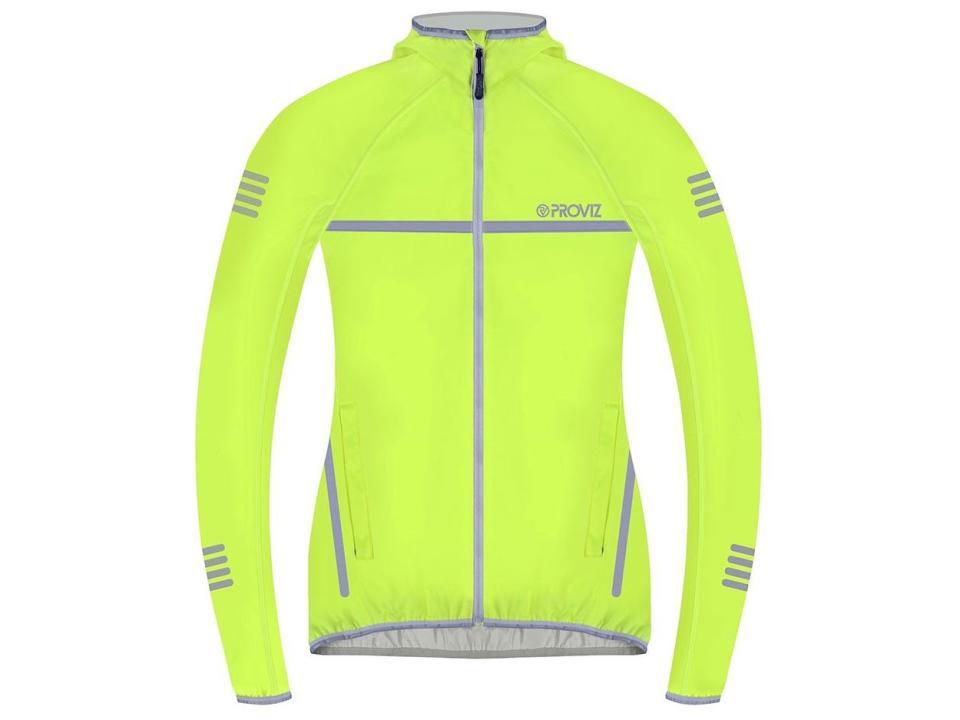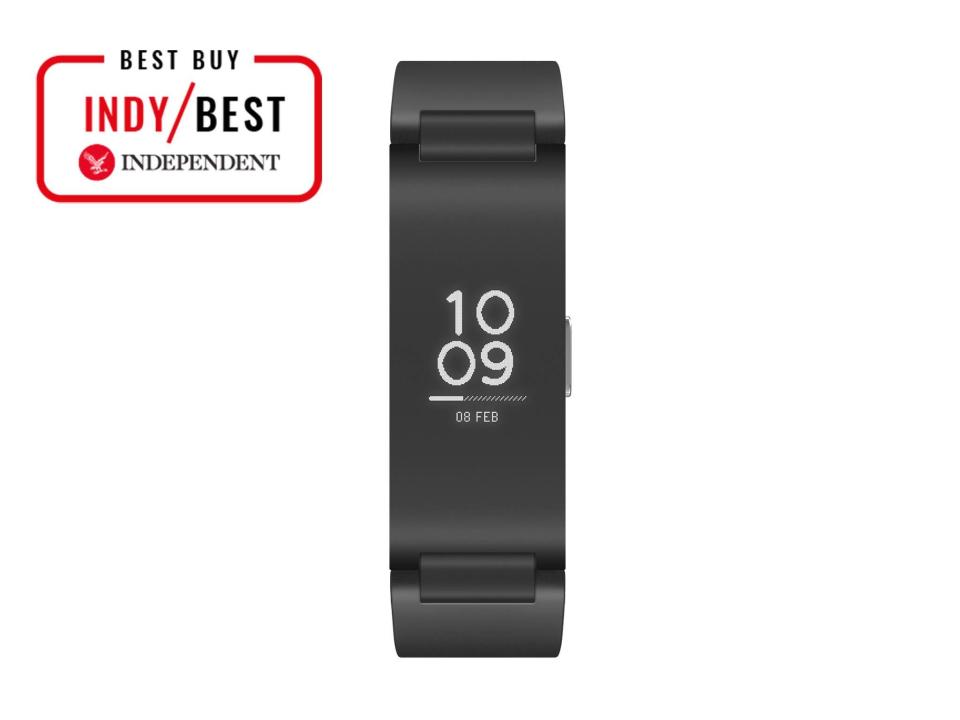Winter running guide: Top tips and kit to keep you moving in the colder months

Make sure your new hobby becomes a habit with these top tips and product recommendations
(Getty)With the Couch to 5k app more popular than ever, and hundreds of thousands of people taking up running in lockdown, enthusiasm for the sport is at an all-time high.
Sport England's Active Lives Survey showed that numbers running outdoors last year increased by 731,000, while the NHS's app clocked up over a million additional downloads.
But what happens when you’ve finished that final week of Couch to 5k, or got over the initial aches and pains of being a new runner? How do you make the habit stick?
It can be difficult when the weather is rotten and you are tired after work, but don't let days off turn into weeks, or you'll feel like you have to start from scratch again.
Creating a routine, building running into your daily life, finding running buddies, entering a goal race, and taking stock and looking back on how far you've come, can all help you lace up those trainers and get out of the door. Here are some top tips to ensure that your new hobby becomes a lifetime habit.
You can trust our independent round-ups. We may earn commission from some of the retailers, but we never allow this to influence selections, which are formed from real-world testing and expert advice. This revenue helps to fund journalism across The Independent.
Build a structure
Having structure really helps when it comes to running, not only in keeping at it, but also in improving – the most important element of training is just consistency.
So commit to pulling on those trainers regularly: a schedule that works for you is something only you can decide, but choose the days and stick with them. If this commitment seems a bit daunting, you can always try a trial month, and see how you feel at the end. Lots of runners thrive off a routine of running a few shorter runs during the week and a longer one at the weekend.
Pick your time of day
Again, only you can decide when this is, but if work and family life allows, mornings are a great time to get out there. The streets tend to be quieter, and you will clear your head before a day of work. Studies have even shown that running in the morning can help you sleep better. If you end up running in the dark – either first thing or at night – remember to be safe and stay visible, with high-vis or reflective elements like a bright jacket.
IndyBest’s women’s winter running jacket best buy: Proviz classic women’s waterproof running jacket, £79.99, Proviz

This Proviz classic women’s waterproof running jacket was included in our review of the best waterproof layers. Our tester said it is a “great choice”, as it proved both breathable and waterproof in addition to being highly reflective.
Use running as a form of transport
If you are based in an office or anywhere that isn’t your house – and we appreciate this is fewer people than normal during the pandemic – you can incorporate your run into your commute.
It doesn’t have to be the full distance, of course. You could run to a train station, or get off a few stops early and run the rest of the way. If you are more of an afternoon/evening person, then do this in reverse on your way home. It does require a bit more planning – you may need to bring a spare change of clothes in a backpack for a start – but it’s a great way of using the time that’s probably otherwise spent scrolling on your phone.
IndyBest’s running backpack best buy: Nike run commuter backpack, £60, Runners Need

If you are looking for a backpack that’s ideal for lightweight commuting, then this is the one for you. Our tester praised this bag for its “spacious” main pocket with “enough room for a change of clothes and a packed lunch”. The side pockets are a good size for a phone or keys, while its finely ventilated mesh back means that you don’t build up a sweat even when the bag is fully loaded.
Use your head
There are some days when going out for a run is the last thing you want to do. You may be tired, or the weather just looks too vile to venture outside. Try to think about other runs you’ve done: did you feel better afterwards? Almost certainly the answer will be yes – so go out with that in mind.
Don’t aim too big – just commit yourself to a small goal that day, like going out for 10 minutes. Getting out the door is always the hardest bit of any run. Once you’ve done that, the odds are you’ll keep going that bit longer. If the weather is really bad, you’ll feel even better afterwards for having battled the elements as well as the negative voices in your head.
Reward yourself
A good trick is to put £1 in a jar every time you go for a run. It will soon add up and you can treat yourself to some new kit, or something entirely unrelated to running. If you are a Monzo and Strava user, you can even save money per metre by using this applet from IFTTT to automate the process.
For a less tangible reward, give yourself a moment or two to consider your running journey so far. If you’ve gone from completely sedentary to a regular running habit, that’s something to be really proud of. Just consider all the health benefits, from lowering your blood pressure to cutting your risk of heart disease.
Go easy on yourself too
However much you enjoy it, there will be a day when your run just feels rubbish and you can’t work out why, and that’s completely normal. Running is mysterious sometimes. Days when you feel you ought to have a spring in your step, your legs are just heavy and uncooperative. Other days, when you’ve barely slept or had a ridiculously stressful day, the road just seems to vanish under your feet.
But don’t beat yourself up about the bad ones – you still worked just as hard, even if it was slower than normal. It’s battling through the bad runs that makes you stronger mentally, too.
Pick your next goal
If you can now fairly comfortably run 5km, then start thinking about what is next. But remember, it doesn’t have to be further. You could do the same distance a bit faster, or more regularly. It could be to join a parkrun every week, once that’s possible again, or perhaps you’ve got a 10km, half marathon or even a marathon race on your bucket list.
Whatever it is, there’s nothing like a goal with a tangible deadline to get you out the door and running. And the sense of achievement and endorphins you’ll get afterwards will make all the work towards that goal worthwhile.
Build slowly
If you do plan to go longer, then build towards it slowly and sensibly. Your body will take time to adjust. A rough rule of thumb is that you shouldn’t add more than 10 per cent per week. That means no more than 10 per cent extra mileage across a whole week, and no more than 10 per cent longer for your longest run.
It’s also a really good idea to think about those long runs in time rather than distance. So you might add five or 10 minutes per week to your run, rather than worrying too much about how far that might take you.
Get the right kit
Running can be a very frugal habit and you certainly don’t have to throw money at it, but having the right kit can mean the difference between an enjoyable run and a horrible one.
If it’s cold, the right layers and accessories will keep you running longer. If you regularly run on muddy, slippy trails, then trail shoes will keep you on your feet. If you love data and geeking out over your stats, then a running watch could prove great motivation. If you are prone to blisters, the right socks may well be worth a few extra pounds. And, if you need it, you should be particularly careful to make sure you’ve got a good, supportive running bra.
Indybest’s running socks best buy: Under Armour run cushion crew sock: £15, Under Armour

Our tester gave these socks a glowing review: “These are the kind of socks where you give a little sigh as you slide them on,” they said. They also praised the thoughtful design, loving the cushioning in the right places, ventilation, breathability, supportive arch, reflective logo on the back and “funky crew length”.
Indybest’s women’s trail running shoes best buy: Saucony peregrine 10: £88, Saucony

These funky trainers secured the top spot in our round-up of the best women’s trail running shoes. Our tester praised the shoes’ 5mm lugs grip, saying they were like “Spider-man in the mud, but still managed some road sections without feeling too clumpy”. They added that there is enough cushioning for comfort, but without “losing too much ground feel”.
Indybest’s sports bra best buy: Runderwear easy-on support running bra: £55, Runderwear

Our tester sang the praises of this undergarment, exclaiming that boobs “are more likely to escape from Alcatraz than pop out during a workout with this bra”. We can’t think of a higher accolade, and that is probably why this high-impact sports option by specialist brand Runderwear is our favourite. Our tester loved the adjustable shoulder straps and wide underband that offered superior support and comfort over any other product they tried.
Indybest’s fitness tracker best buy: Withings pulse HR tracker: £89.95, Withings

With so many fitness trackers on the market now it can be hard to find the right one for you, but Withings is known for making outstanding health and fitness gadgets. Our tester loved this one for its ability to track over 30 different activities and the built-in heart-rate monitor. They also raved about how it is lightweight enough to wear in bed, making it perfect for monitoring your sleep cycle too.
Find company
Team up with a running buddy. Having someone who is waiting for you at a set time will get you out the door, and if you run and chat the time will fly by.
When it’s possible, look into joining a running club. Many people think these are only for people who are “good” at running, but actually, they are just for people who like running! There are so many now, both virtual and in real life, that there will certainly be one full of likeminded people following similar goals to yours.
Also consider joining Strava, the social media network for runners and cyclists. You don’t have to share all your runs, but sometimes seeing what your friends are up to can be a great motivator to get yourself out the door.
If you are only just starting out on your fitness journey, take a look at our beginner’s guide to running outside while gyms are closed
Read More
10 best fitness apps for every workout, from yoga to running
Everything you need to work out in the cold in lockdown
10 best online fitness classes for exercising at home during lockdown

 Yahoo Finance
Yahoo Finance 